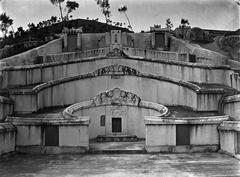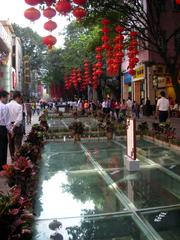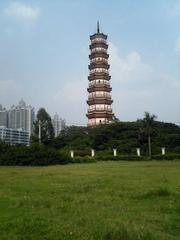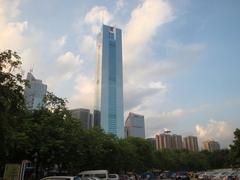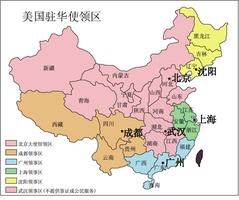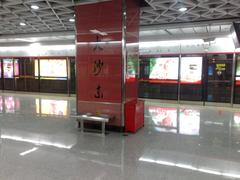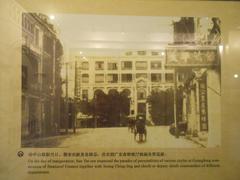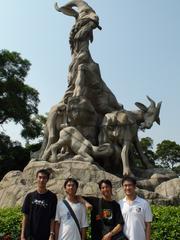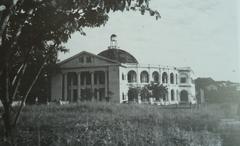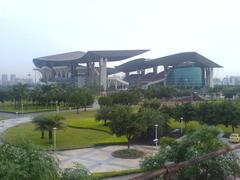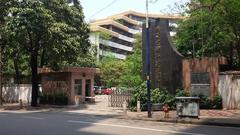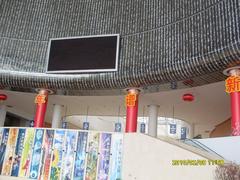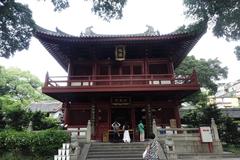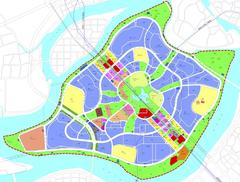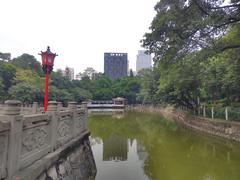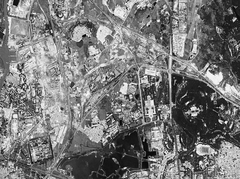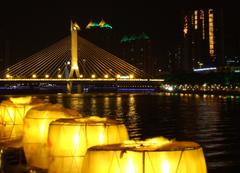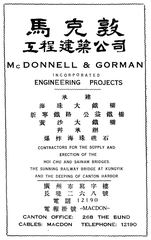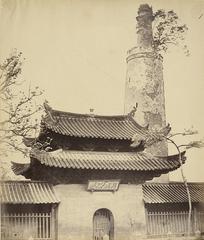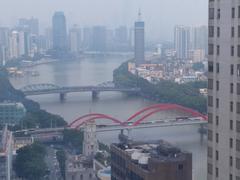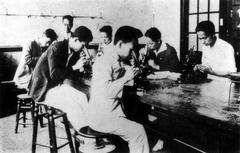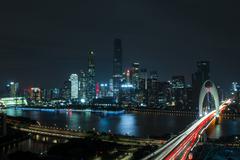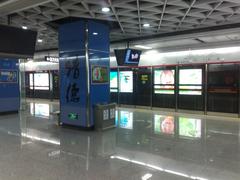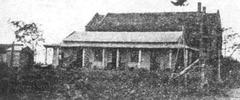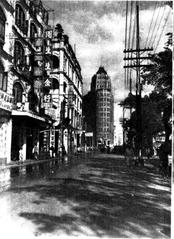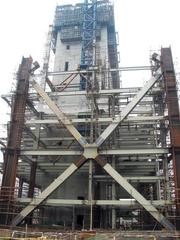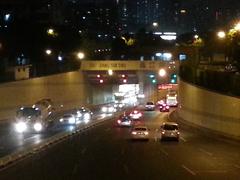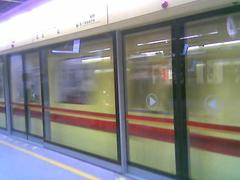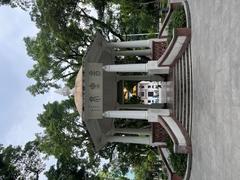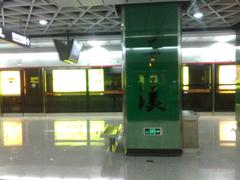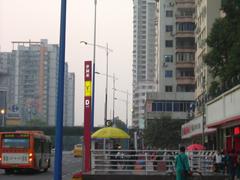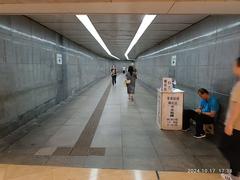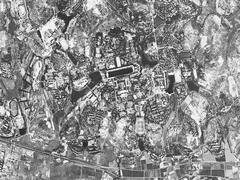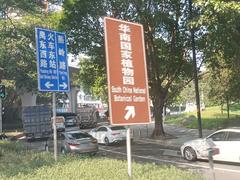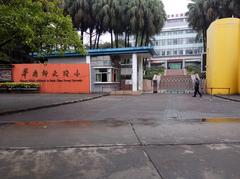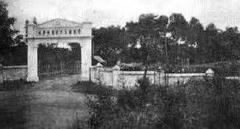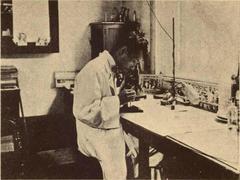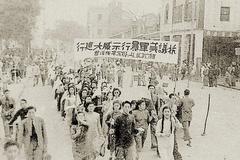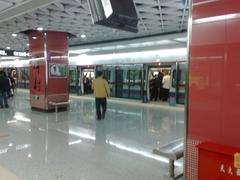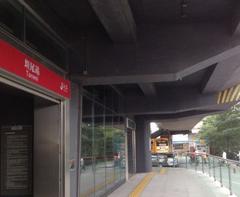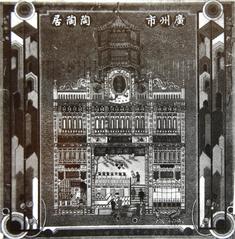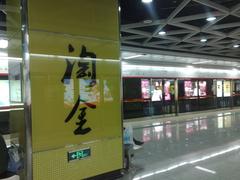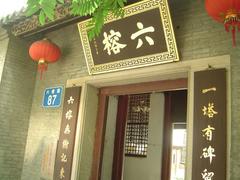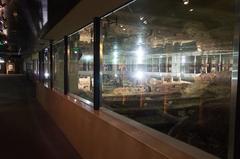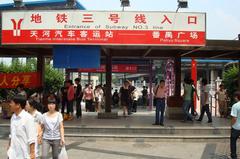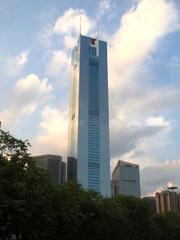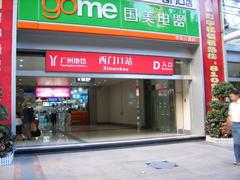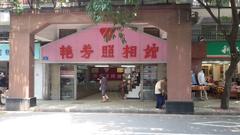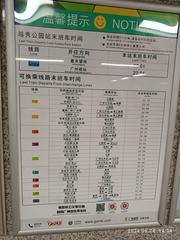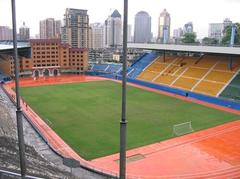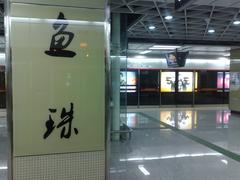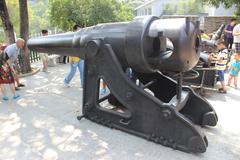Hualinsi Buddhist Temple Station Guangzhou: Visiting Hours, Tickets, and Travel Guide
Date: 15/06/2025
Introduction to Hualinsi Buddhist Temple Station and Its Significance
Hualinsi Buddhist Temple is a historic landmark in Guangzhou’s Liwan District, representing over 1,400 years of Buddhist heritage and cultural continuity. Established during the Liang Dynasty (502–557 CE), the temple has served as a center of spiritual learning and a testament to the city’s rich religious traditions (Guangzhou Government, China Highlights). Today, Hualinsi Temple remains an active place of worship and an important cultural destination, seamlessly connected to the rest of Guangzhou by the modern Hualinsi Buddhist Temple Metro Station on Line 8 (Guangzhou Metro Official, Trip.com Moments).
Beyond the temple, the surrounding Hualinsi Historical Neighbourhood and Hualin Jade Street provide visitors with a living window into Guangzhou’s commercial history and Lingnan architecture, making the area a must-visit for anyone interested in the city’s cultural fabric (Guangzhou Insider, Top China Travel).
This guide delivers detailed, structured information on visiting hours, ticket policies, transportation, accessibility, architectural highlights, and practical tips for exploring Hualinsi Buddhist Temple and its vibrant neighborhood.
Contents
- Introduction
- Historical Background: Hualinsi Buddhist Temple & Metro Station
- Origins and Evolution
- Role in Guangzhou’s Urban & Religious Landscape
- Integration with Urban Transit
- Cultural Significance & Symbolism
- Architectural Features
- Preservation & Community Engagement
- Visitor Information: Hours, Tickets, Accessibility, and Tips
- Visuals & Media
- Exploring Nearby Historical Sites
- Hualinsi Buddhist Temple Station: Station Guide & Urban Context
- Architectural Design & Layout
- Visitor Information & Tips
- Nearby Attractions
- Hualinsi Historical Neighbourhood & Hualin Jade Street
- Historical Background
- Jade Trade Market Guide
- Visitor Advice
- About Hualinsi Buddhist Temple: History, Events, and Facilities
- Transportation Options
- Summary Table: Key Facts
- Call to Action
- Sources
Historical Background of Hualinsi Buddhist Temple and Metro Station
Origins and Evolution
Hualinsi Buddhist Temple (华林寺) is among Guangzhou’s oldest Buddhist sites. Founded in the Southern Dynasties era, it was originally commissioned by Emperor Wu of Liang to promote Buddhism in southern China (Guangzhou Government). Throughout its history, the temple has been rebuilt and restored after periods of destruction, with significant renovations during the Tang, Song, and Ming dynasties.
The temple’s name, “Hualin” (“Flower Forest”), represents Buddhist ideals of enlightenment. It was once famed for its “Gilded Thousand Buddha Pagoda,” which housed hundreds of gilded Buddha statues. Despite damage and loss during the Qing Dynasty and more recent historical periods, Hualinsi remains central to Guangzhou’s religious landscape (China Highlights).
The Temple’s Role in Urban and Religious Life
As one of the earliest Buddhist centers in the region, Hualinsi has long influenced Guangzhou’s identity. The temple attracted monks and scholars, serving as a prominent hub for Buddhist teachings and scripture translation—especially during the Tang and Song dynasties (Travel China Guide). Its location near the Pearl River facilitated cultural exchange with India and Southeast Asia, impacting local art, architecture, and customs.
Modern Transformation: Integration with Urban Transit
In 2020, the opening of Hualinsi Buddhist Temple Station on Line 8 of the Guangzhou Metro provided unprecedented access to the temple and surrounding heritage neighborhoods (Guangzhou Metro Official). The station’s architectural design incorporates Buddhist and Lingnan motifs, bridging tradition and modern transit. Its proximity to the temple supports both local worshippers and visitors, making cultural exploration more convenient.
Cultural Significance and Symbolism
Hualinsi Temple is a symbol of resilience and cultural continuity in Guangzhou. Despite historical adversity, the temple has been repeatedly restored by the local community. Its legendary “Thousand Buddha Hall” and annual festivals (like Vesak and Lunar New Year) draw thousands of devotees, underscoring its ongoing spiritual and cultural role (South China Morning Post).
Architectural Features and Artistic Heritage
The temple complex, though largely reconstructed in the 20th century, maintains classic Lingnan architectural elements: curved eaves, intricate wood carvings, murals of Buddhist deities, ancient banyan trees, stone steles, and a pagoda (Lonely Planet). Artistic influences reflect Guangzhou’s history as a trade gateway, blending Chinese and Indian Buddhist styles.
Preservation Efforts and Community Engagement
Local authorities and Buddhist societies have invested in preserving Hualinsi Temple, focusing on restoring structures, conserving artifacts, and improving visitor access (Guangzhou Cultural Heritage Bureau). The adjacent metro station has further raised public awareness and encouraged sustainable tourism through interpretive panels and guided tours.
Visitor Information: Hours, Tickets, Accessibility, and Travel Tips
- Visiting Hours: Daily, 8:00 AM – 5:00 PM (may extend during festivals; check ahead)
- Tickets: Free admission (donations welcomed)
- Accessibility: Wheelchair-accessible entrances, ramps, elevators, and restrooms at both temple and station
- Guided Tours: Offered in Mandarin and English; inquire at the temple or via local agencies
- Photography: Allowed in most areas, except in sacred zones; always respect signage
- Travel Tips:
- Visit early or late for fewer crowds and better light
- Weekdays are quieter than weekends/festivals
- Wear comfortable shoes and modest attire
- Combine your visit with nearby attractions (Xiguan Old Houses, Shangxiajiu Pedestrian Street, Chen Clan Ancestral Hall)
Visuals and Media
Official tourism websites and the station’s digital displays offer high-quality images and virtual tours. These resources provide an immersive preview of the temple’s architecture and the neighborhood’s vibrant street life.
Exploring Nearby Historical Sites
Hualinsi Buddhist Temple Station is a gateway to the Xiguan district, renowned for its preserved Lingnan architecture, historic mansions, and traditional markets. The Chen Clan Ancestral Hall and Shangxiajiu Pedestrian Street are within walking distance, making it easy to create a full day’s cultural itinerary.
Hualinsi Buddhist Temple Station: Station Guide & Urban Context
Architectural Design and Layout
The station’s design is inspired by the temple’s Buddhist motifs (lotus patterns, woodwork panels, muted colors) and integrates them with modern metro features (Baidu Baike). Murals and installations throughout the station illustrate Buddhist lore and temple history, creating a harmonious link between transit and heritage (Trip.com Moments).
- Platform: Spacious underground island platform with high ceilings for enhanced passenger flow
- Entrances/Exits: Multiple, including a direct exit to the temple; bilingual signage and decorative elements with traditional motifs (Baidu Baike)
- Accessibility: Elevators, tactile paving, barrier-free routes, and accessible restrooms
Visitor Information & Tips
- Temple Visiting Hours: 8:00 AM – 5:30 PM (confirm during holidays)
- Metro Ticketing: Buy at station machines or counters; fares based on distance
- Peak Times: Avoid morning/evening rush and major festivals for a better experience
- Amenities: Customer service, vending machines, and restrooms are on the concourse
- Wayfinding: Bilingual signs and floor markings guide visitors from exits to the temple (Traveloka)
Nearby Attractions
Besides the temple, visitors can explore Liwan Plaza, Hualin Jade Street, and traditional neighborhoods. Check local guides for schedules of guided tours and temple events.
Hualinsi Historical Neighbourhood & Hualin Jade Street
Historical Background
The Hualinsi Historical Neighbourhood, centered around Hualin Temple, is a historic area closely tied to Guangzhou’s development as a port and trading center. The temple itself was established by Bodhidharma in 526 CE, serving as a spiritual and community anchor (Guangzhou Insider).
Hualin Jade Street: Jade Market Guide
Hualin Jade Street is famed as one of China’s largest jade markets, with hundreds of shops and stalls offering everything from affordable trinkets to high-value jewelry (Top China Travel). The market’s central hub, Hualin Jade Plaza, features over 280 stands in a comfortable indoor setting (Business in Guangzhou).
Visitor Advice
- Getting There: Direct access via Hualinsi Buddhist Temple Station (Line 8); multiple bus routes also serve the area
- Market Hours: Jade shops typically open from 9:00 AM – 6:00 PM
- Shopping: Bargaining is customary; seek certification for expensive items
- Accessibility: Main streets are pedestrian-friendly, but some lanes may be narrow
- Etiquette: Dress modestly in temples, be respectful, and confirm photography permissions
- Safety: Mind belongings in crowded markets, and visit on weekday mornings for a relaxed experience
About Hualinsi Buddhist Temple: History, Events, and Facilities
Key Features
- History: Over 1,400 years old, with deep links to Guangzhou’s religious and commercial history
- Architecture: Lingnan style, curved eaves, wooden halls, tranquil gardens
- Events: Buddhist festivals and temple fairs; guided tours available (inquire locally)
Facilities
- Restrooms, ATMs, and food options nearby
- Accessibility: Ramps, elevators, and accessible restrooms at both the temple and station
Transportation Options
- Metro: Line 8 (Hualinsi Buddhist Temple Station), with multiple exits providing easy access to the temple and neighborhood
- Bus: Numerous routes (including 114, 125A, 17, 181, etc.) stop nearby
- Taxi/Ride-Hailing: Widely available; show the address “华林寺前街31号, 荔湾区”
- Bicycle/Walking: Ideal for exploring local streets and nearby attractions
Summary Table: Key Facts
| Feature | Details |
|---|---|
| Metro Line | Line 8 (Hualinsi Buddhist Temple Station) |
| Station Exits | B, C1, C2/D, E (serving major streets and temple entrance) |
| Accessibility | Elevators, ramps, tactile paving, accessible restrooms |
| Bus Routes | 114, 125A, 125, 17, 181, 226, 238, 239, 251, 288A, 288, 297, 521, 552, etc. |
| Taxi/Ride-Hailing | Use “华林寺前街31号, 荔湾区” or map apps for directions |
| Temple Hours | 8:00 AM – 5:00 PM, daily |
| Admission | Free |
| Metro Hours | 5:00 AM – Midnight |
| Languages | Chinese (English in metro) |
| Contact | +86-20-81393175 |
Call to Action
Plan your visit to Hualinsi Buddhist Temple and immerse yourself in Guangzhou’s vibrant history and spirituality. Download the Audiala app for real-time visitor information, guided tours, and offline maps. Explore our related articles for more tips on Guangzhou’s top attractions and follow us on social media for the latest updates.
Sources and Further Reading
- Guangzhou Government
- China Highlights
- Travel China Guide
- South China Morning Post
- Guangzhou Metro Official
- Baidu Baike
- Trip.com Moments
- Traveloka
- Mapcarta
- Guangzhou Insider
- Top China Travel
- Business in Guangzhou
- Wikipedia: Hualinsi Buddhist Temple Station
- Metro Guides: Guangzhou
- Guangzhou Government: Religious Venues
- Guangzhou Insider: Hualinsi Neighbourhood
- Lonely Planet
